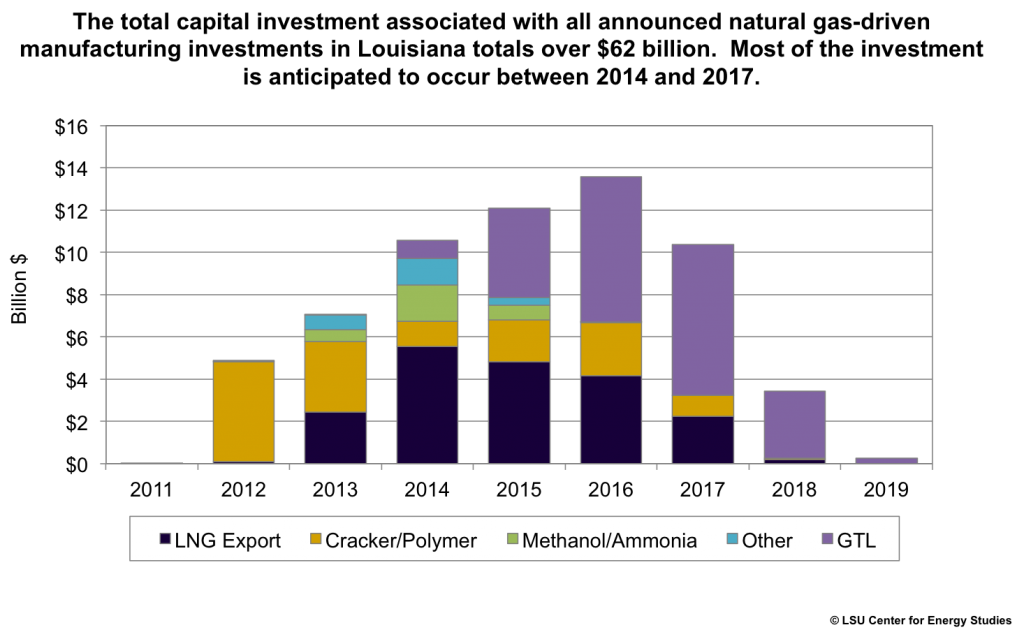Impacts of Industrial Development on Water Resources
In a multi-part release over the next few weeks, we’ll be posting a series of updates exploring key themes and recent outcomes from the Louisiana Water Synergy Project. While these themes are Louisiana-specific, all of them can be applicable to most watersheds in the US. On July 30th, the Louisiana Water Synergy Project held its quarterly meeting in Baton Rouge, Louisiana, bringing over 35 representatives of academia, industry, service companies, and regulators together to discuss their shared interests in water quality, quantity, storm water management, and coastal resiliency.
 The LSU Center for Energy Studies estimates $62 billion in industrial investments are planned for Louisiana including new facilities and expansions of existing facilities, with a large portion coming from the chemical, refining, and manufacturing sectors. The Center predicts most of the development will occur along the Mississippi River corridor between Baton Rouge and New Orleans - the heart of the Water Synergy Project area.
The LSU Center for Energy Studies estimates $62 billion in industrial investments are planned for Louisiana including new facilities and expansions of existing facilities, with a large portion coming from the chemical, refining, and manufacturing sectors. The Center predicts most of the development will occur along the Mississippi River corridor between Baton Rouge and New Orleans - the heart of the Water Synergy Project area.
David Dismukes, Associate Director at the Center, is examining the potential economic impacts associated with these planned capital investments in Louisiana over the next nine years, which are driven in large part by the increased availability and low cost of natural gas.
Facilities highlighted for expansions or new construction include liquid natural gas (LNG), gas to liquid (GTL), and chemical production including methanol, ammonia, and polymer. Water is used to re-vaporize LNG, as a feedstock for chemical production, and in the transport of goods to terminals. Each use is accompanied by potential water management challenges; and as industry grows, water use will intensify.
An influx of industrial development comes with a substantial increase the number of jobs, and workers to fill those positions. Louisiana will not only experience economic development, but also infrastructure challenges as the population rises. Non-point source pollution is often solely attributed to agriculture, but according to the EPA, the second leading source of water quality impairment in the United States is municipal point sources, followed by changes in land use and urban runoff. (source) As neighborhoods expand, impacts to water quality and quantity will follow.
The scale of the development projected for Louisiana is unprecedented and exponentially raises the importance of cross-sector communication and management of water resources. The Louisiana Water Synergy Project is led by members of oil and gas, chemical, energy, alumina, steel, cement, fertilizer industries and service companies. Representation from the agriculture sector is expected to join soon. Through our meetings individual water challenges are revealed to be common issues, best management practices are shared, and unified strategies are developed; strategies that will be crucial for effective water management in the years to come.
